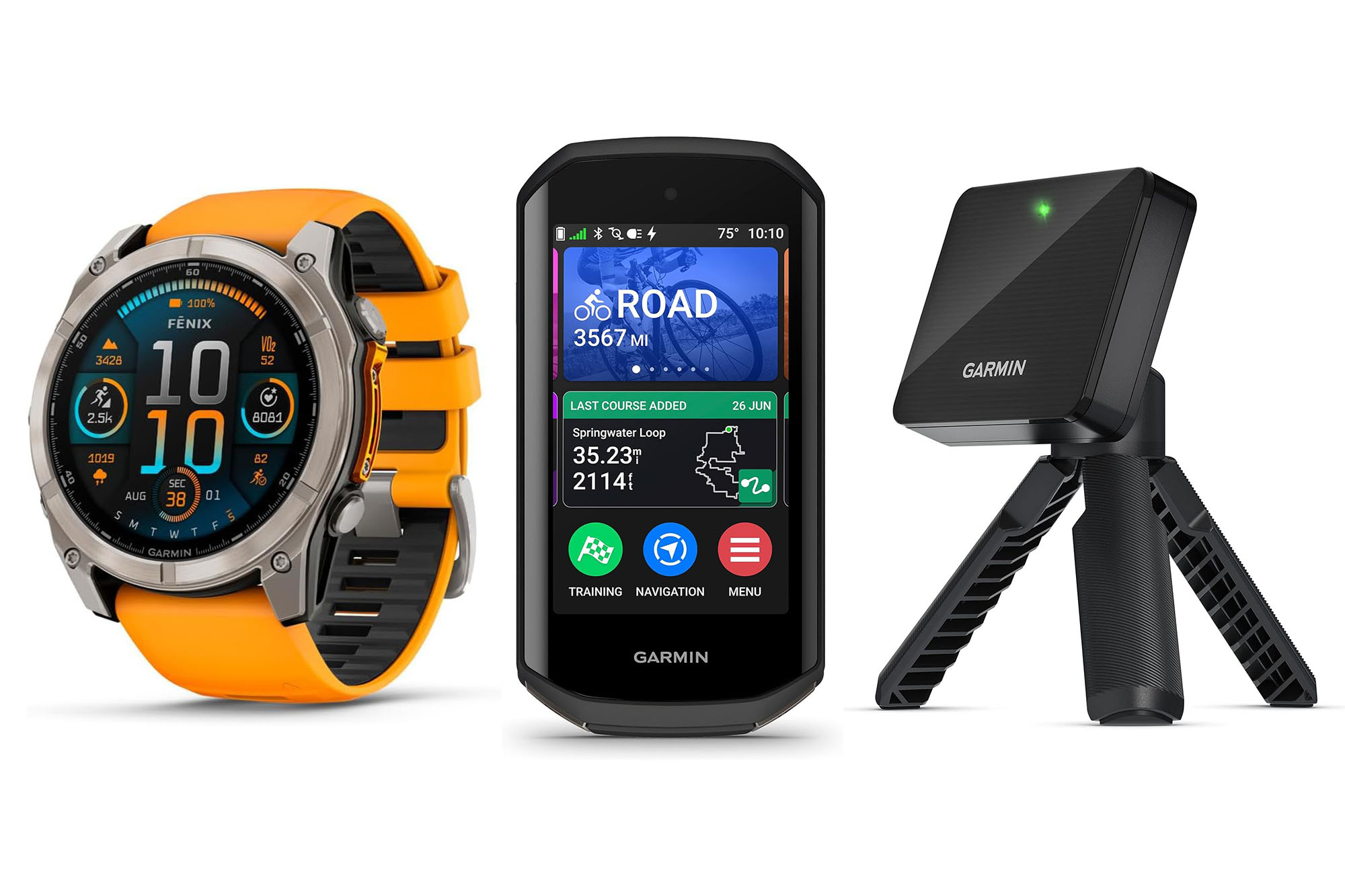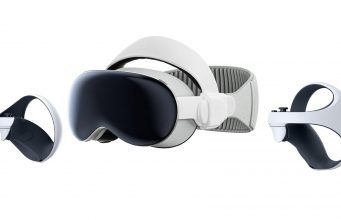The best fat tire electric bikes for 2025, tested and reviewed
These electric fat bikes—characterized by their wide tires, durable frames, and versatile geometry—are all-terrain beasts. The post The best fat tire electric bikes for 2025, tested and reviewed appeared first on Popular Science.

There are few bike styles that are as all-around capable as fat tire e-bikes. On the one hand, you have the burly, all-terrain surefootedness of a fat bike; on the other, you have the above-and-beyond performance provided by an electric motor. In other words, the best fat tire electric bikes—like our best overall, the Rad Power RadRover 6 Plus—offer the best of both worlds, whether on the road or in the backcountry, which is why we’re offering our picks for the best of the best.
- Best overall: Rad Power RadRover 6 Plus
- Best for off-road: Ride1Up Revv 1 DRT
- Best value: Lectric XPeak 2.0
- Best splurge: Segway Xyber
- Best value: Heybike Mars 2.0
- Best budget: Himiway Cruiser
How we chose the best fat tire e-bikes
As a lifelong cyclist—both road and trail—I offer some 30 years of experience riding bikes of all types. In recent years, I’ve relentlessly tested the best electric bikes and e-bike conversion kits and reviewed them for publications like Popular Science, Bicycling, Popular Mechanics, the Manual, and more. For this list, I explored recent releases from an extremely wide range of brands, testing bikes for different riding needs, experience levels, and budgets. My firsthand tests have been bolstered by input from the PopSci editors and other expert reviewers.
The best fat tire electric bikes: Reviews & Recommendations
Fat tire electric bikes are characterized by their wide tires, durable frames, and versatile geometry. Not only does that rank them among the ablest of rides for off-road trails and surfaces, but unlike electric mountain bikes, a standard fat tire bike’s more traditional design makes it a solid commuter e-bike for transit in city centers as well. Here are our top recommendations for these top all-arounders so you can grab some accessories and get where you need to go, no matter where the road leads you (or ends).
Best overall: Rad Power RadRover 6 Plus
Pros
- Supremely comfortable
- Extremely versatile
- Rad Power’s vast ecosystem of accessories
Cons
- Not designed for rougher terrain or trails
Specs
- Motor: 750W
- Torque: 50Nm
- Battery capacity: 589-672Wh (depending on region)
The RadRover from Rad Power has gone through several iterations now, and the 6 Plus brings it to a near-perfect package if you’re looking for an extremely versatile fat tire e-bike. In terms of performance, its 750W, 50Nm motor is solidly powerful, delivering plenty of oomph for climbing urban hills or moderate off-road hills. And its battery capacity is above average, providing a potential range upwards of 45 miles (though realistically more like 30).
Beyond the electronics, it’s also a well-considered bike by pretty much every measure. The frame geometry is highly versatile, suited for riders of a variety of body types to use in a variety of conditions. Its hydraulic disc brakes are plenty reliable. The moderate front suspension cruises over bumps, and the included headlamp and sturdy fenders are nice touches. Add its generously padded seat, and you’ve got an incredibly comfortable cruiser.
What’s more, it can be endlessly customized via Rad Power’s vast ecosystem of accessories, such as baskets, cargo carriers, bags, bottles, consoles, locks, mirrors, lights, phone mounts, tire armor, passenger seats, trailers, and even pet carriers—and a whole lot more. If you’re looking for a bike geared more toward trail riding, this probably isn’t your best option, but for all practical purposes, this is a great fat tire e-bike.
Best for off-road: Ride1Up Revv 1 DRT
Pros
- Dirtbike-like off-road capability
- Moto-style headlamp
- Unlockable for 40+ mph performance
Cons
- Heavy
- Not a long hill climber
Specs
- Motor: 1000W
- Torque: 95Nm
- Battery capacity: 1040Wh
As a longtime dirtbike trail aficionado, I was thoroughly impressed by the Ride1Up Revv 1 DRT. With decently high baseline specs, it delivers zippy performance, the knobby tires gobble up soft, loose surfaces, and the suspension absolutely cruises over trail obstacles. That’s all great, but it gets even better if and when you register it with the company, sign a waiver, then unlock its beastly Off-Road Mode, which increases its top throttle speed to upwards of 40mph. What’s more, its Boost button surges the controller amperage from 28 to 35 amps, temporarily upping the max speed even further. The company says these high-speed modes are intended for use on private property only, but in any case, I’ve rarely ridden an e-bike that goes faster.
Translation: It’s very fun to race along off-road trails. That being said, while it has the torque to handle short inclines and modest obstacles, it loses power over a long climb, so it’s not the best for big hills. But it is ruggedly built, surefooted, and fast. I also like the wide, moto-style headlamp, which allows me to keep riding on uncertain terrain well into the evening.
Best value: Lectric XPeak 2.0
Pros
- Outstanding performance, especially considering price
- Very comfortable and ergonomic
- Lots of accessories options
Cons
- Not ideal for overly rough terrain
Specs
- Motor: 750W
- Torque: 85Nm
- Battery capacity: 720-960Wh (depending on package)
I tested the Lectric XPeak 2.0 while camping with my extended family, which means it was ridden by everyone from rowdy teens to my aging aunts, and it was a crowd pleaser across the board. The thrill seekers among us enjoyed it for its bounding performance and ability to power over uneven, soft terrain, and those who were more careful appreciated its stable, comfortable ride and smooth pedaling. While it’s not made for more technical MTB trails, it’s more than capable of zipping over moderately uneven or loose surfaces, making it great for groomed paths.
With a 750W motor that can peak up to 1,310W and a substantial 85Nm of torque, it’s got plenty of oomph to handle modest obstacles and steep uphill climbs. The standard 720Wh battery can deliver an above-average range of up to 60 miles (though it’s realistically more like 40), and the long-range package tacks on another 20. The build quality is excellent—it feels like a sturdy bike that will last, and some hard testing from my end has proven it. And you can build it out with Lectric’s expansive accessory options. All in all, it’s a sure-footed, well-rounded fat tire ebike, especially considering its modest price tag.
Best splurge: Segway Xyber
Pros
- High-tech security features
- Best-in-class range
- Wild acceleration
Cons
- Very heavy
- May garner critical looks on a bike path
Specs
- Motor: 3000W (Peak with one battery), 6000W (Peak with two batteries)
- Torque: 120Nm (with one battery), 175Nm (with two batteries)
- Battery capacity: 1440Wh (with one battery), 2880Wh (with two batteries)
To be perfectly honest, most people don’t need this bike, which makes the Segway Xyber an ideal splurge. Don’t tell the cops, but thanks to its bonkers performance, the Segway Xyber is a lot closer to a dirt bike than an e-bike. The appearance certainly supports that impression—it’s specifically designed to look like a motorcycle—but the source of its outstanding performance is its massive battery capacity and drive. With one battery, its range is upwards of 50 miles, and the motor can churn out up to 3000W and 120Nm of torque. That’s already great, but when you add on a second battery, the range jumps up to over 100 miles, and the motor output becomes a sky-high 6000W and 175Nm. That results in the most impressive acceleration, mere seconds to reach 20 mph, we’ve seen. Luckily, the brakes are as effective as the motor.
On top of all that, its Intelligent Ride System includes slick security features like AirLock Keyless Locking and auto shutdown, locking, and kickstand deployment when unauthorized users attempt to steal it. The display offers navigation and music controls and pairs with your phone, and its unique control wheel makes it easy to adjust settings. The Xyber looks, feels, and functions like a blend between an e-bike and a motorcycle in a way that seems to herald the future of two-wheeled transport. Of course, all of this requires a heavyweight frame, which means the bike is almost 170 pounds with two batteries, so there are height and comfort-level requirements. And there is the $4,299 price (or $3,299 if you only want one battery). But if you want a tech-savvy, high-powered e-bike with the best range and tech, it delivers.
Best value: Heybike Mars 2.0
Pros
- Wildly powerful motor
- Great torque
- Foldable
Cons
- Folding can be cumbersome
- Difficult to ride if the battery runs out
Specs
- Motor: 1200W
- Torque: 80Nm
- Battery capacity: 600Wh
The Mars 2.0 from Heybike gets our value pick because it packs a lot of bike into an affordable, foldable package. That 1200W motor is outright wild, especially coupled with its 80Nm torque. Suffice it to say that you’ll never have trouble getting up to speed with this bike. Its 600Wh battery is decent in terms of capacity, but don’t let yourself run out of juice while far from your destination, as its high center of gravity and relatively high weight make it difficult to pedal and control when unpowered.
In terms of design, the fact that it offers so much power in a foldable bike makes it extremely good for around-town commutes. It’ll zip you wherever you need to go; after that, you can fold it up and bring it inside. It can be a bit cumbersome to fold, but that’s pretty common among folding e-bikes. All in all, this is a great fat tire e-bike for versatile, go-anywhere riding.
Best budget: Himiway Cruiser
Pros
- Massive hill-climbing torque
- Powerful motor
- Big battery
Cons
- Pedal assist lag
- Mechanical brakes
Specs
- Motor: 750W
- Torque: 80Nm
- Battery capacity: 840Wh
For a sub-thousand-dollar ebike, the Himiway Cruiser puts up some admirable stats. Its 750W motor is strong and quick, particularly when you factor in that 80Nm torque, making this an absolute hill-killer. Its massive battery is great, too, capable of quite easily surpassing 40 miles on a single charge. The display can be a bit glitchy in terms of speed and accuracy, and you may notice a lag to the pedal assist, but barring these details, the electronic specs are solid.
In terms of design, it’s a well-rounded bike with good front suspension, versatile geometry, and an all-around comfortable ride. The included rear rack is sturdy and accommodates a pretty decent range of accessories. It’s a fairly heavy bike, so I’m not a huge fan of its mechanical brakes—something this loaded would definitely benefit from hydraulic disc brakes. That being said, this is an affordable bike that delivers specs you’d typically expect to pay much more for.
What to consider when picking a fat tire electric bike
The e-bike space is increasingly dominated by fat tire models because so many riders appreciate the improved smoothness, traction, and versatility. That being said, there are a few things you need to keep in mind to ensure that you get one of the best rather than one of the many.
Bike motor: power and torque
In most cases, your first thoughts should be of the motor. While on flat pavement, the motor might not make a huge difference, but if you plan on riding off-road or uphill, you will want solid wattage and torque. For a fat tire e-bike, never dip below a 500W motor, and ideally, look at 750W or up. This will ensure that your motor performs on hills and won’t burn out if you push it too hard.
The torque determines a motor’s ability to transfer rotational power to the back wheel. More torque equals more hill-climbing ability, and it helps get the bike moving from a complete stop. Torque is measured in newton-meters, and you’ll never want less than 50Nm.
Battery range
If you were shopping for a daily commuter, I would advise getting a battery that balances capacity and weight because high-capacity batteries tend to make an e-bike much heavier. But with fat bikes, which you’ll typically use more recreationally, I say go big or go home. You want a huge battery to stay out and play all day. Battery capacity is measured in watt-hours, and you’ll never want less than 500Wh. What that translates into in terms of range depends on factors like terrain, incline, speed, rider weight, and pedal assist setting, but you can count on that to last between 20-40 miles.
Comfortable ride
If you’re not comfortable on a bike, you won’t enjoy riding it. Comfort is largely a matter of individual preference, but there are a few generalities you can consider. Do you prefer a bike that has a more upright or forward-leaning stance? Do you like a seat that is plush or firm? A frame that’s smaller or larger? These can help you zero in on a few suitable models. From there, it never hurts to go for a test ride.
Off-road capability
Fat tire bikes tend to be more all-purpose applicable than mountain-specific bikes, but they still lean toward off-road riding thanks to their wide, heavily studded tires, which lend themselves to soft and irregular surfaces. Even so, some fat bikes deliver more or less all-terrain capability. Models with more suspension and fewer cargo accessories are often more off-road oriented, but not always. Sometimes, the best way to know whether a bike is intended for heavier off-road use is simply by reading the manufacturer’s description.
Suspension
Speaking of suspension, this can be an important consideration. Some people don’t need suspension at all, especially with the bouncy cushioning of fat tires. Others may prefer a good front suspension to take the edge off bumps and uncertain surfaces.
FAQs
In the past, fat tires were used primarily for off-roading on soft surfaces, but they’ve become increasingly popular for all riding purposes thanks to their gentle, surefooted ride. In fact, these days, they’re beginning to rival narrower road tires in terms of popularity.
That’s an extremely broad question, as a fat tire’s lifespan is determined by factors like make, usage, load weight, and so on. Generally speaking, you can expect a set of fat tires to last somewhere between 1,000 and 3,000 miles.
Fat tires are big and bulky, which can make them heavier and more challenging to lift onto a rack or carry upstairs.
While fat tires can feel a bit sluggish when pedaling on paved surfaces, the motor of an e-bike tends to negate the issue.
They can be great for street riding. The downsides are minimal, but the upsides are improved traction, stability, and smoothness.
Fat tires are the go-to for riding on snow or otherwise slick surfaces. In snow, experienced riders will often deflate their fat tires to as low as 5psi in order to spread the traction.
Absolutely. In fact, for unknown terrain where you might hit mud, sand, swamp, or otherwise soft ground, they can be invaluable for getting through whatever nature throws at you.
Final thoughts on the best fat tire electric bike
- Best overall: Rad Power RadRover 6 Plus
- Best for off-road: Ride1Up Revv 1 DRT
- Best value: Lectric XPeak 2.0
- Best splurge: Segway Xyber
- Best value: Heybike Mars 2.0
- Best budget: Himiway Cruiser
I was skeptical of the rising popularity of fat tires on e-bikes at first. But, much to my surprise, they’ve become my ride of choice. The fusion of fat tire traction and softness with electric power and performance results in an outstanding level of versatility. While they tend to be heavier and more cumbersome than their conventional tire or non-electric counterparts, the benefits definitely outweigh what few drawbacks there are. It’s no surprise that fat tire e-bikes are becoming so popular. Now that you know what to expect from your ride, you can get an e-bike and get on the road.
The post The best fat tire electric bikes for 2025, tested and reviewed appeared first on Popular Science.































































































































































